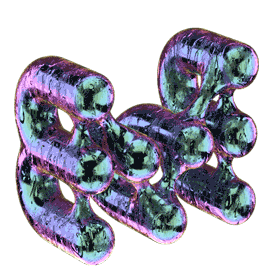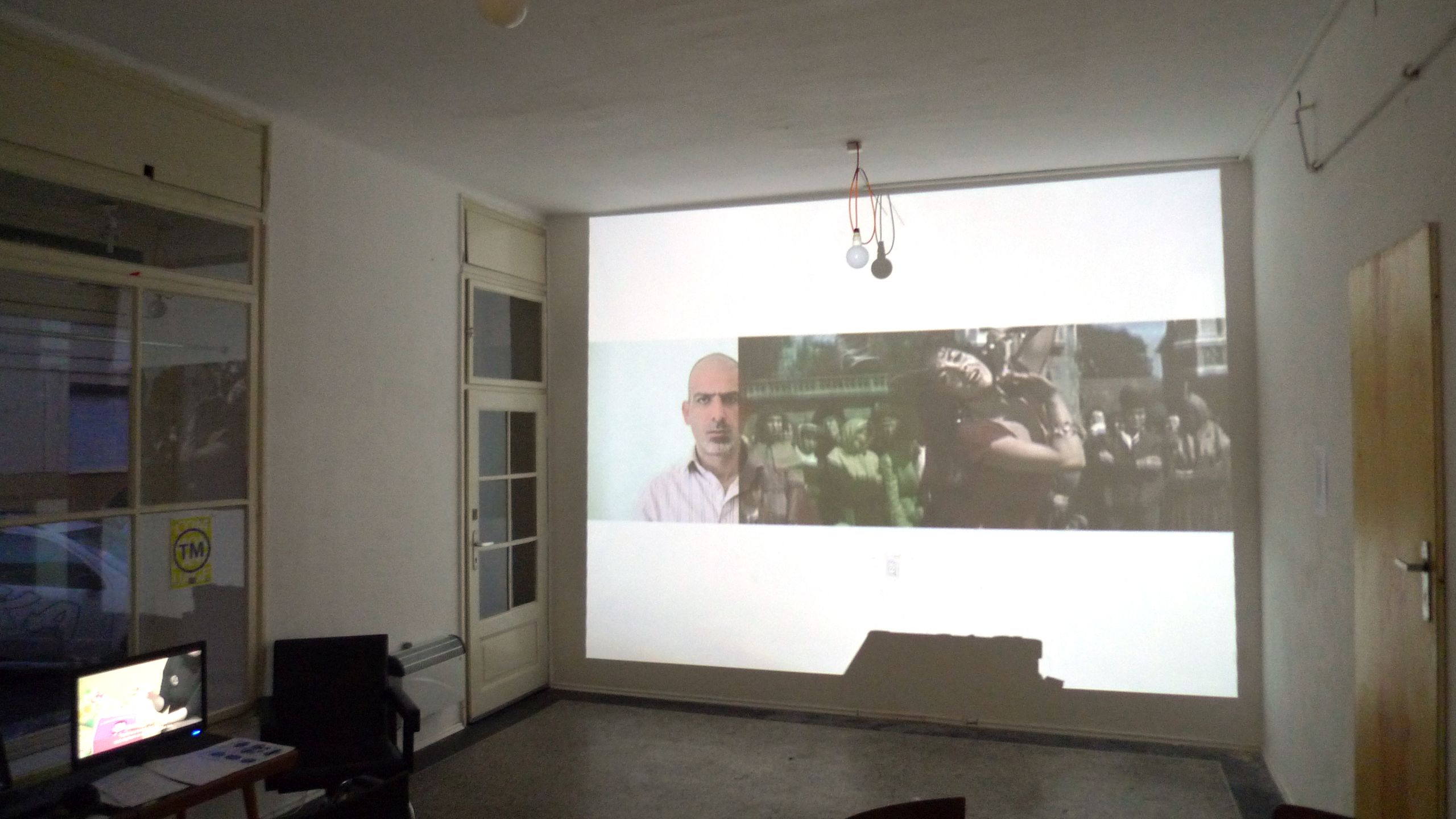
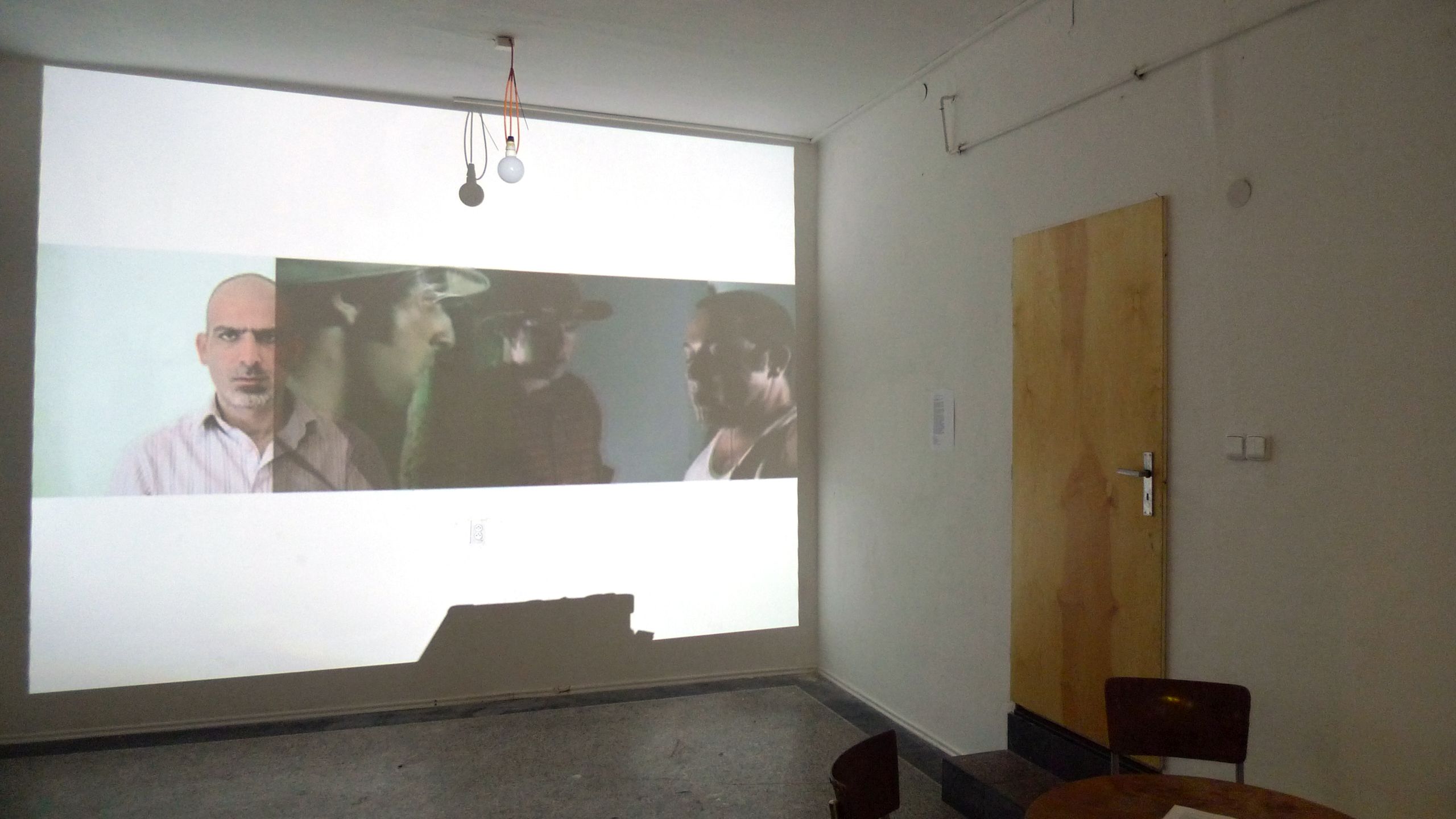
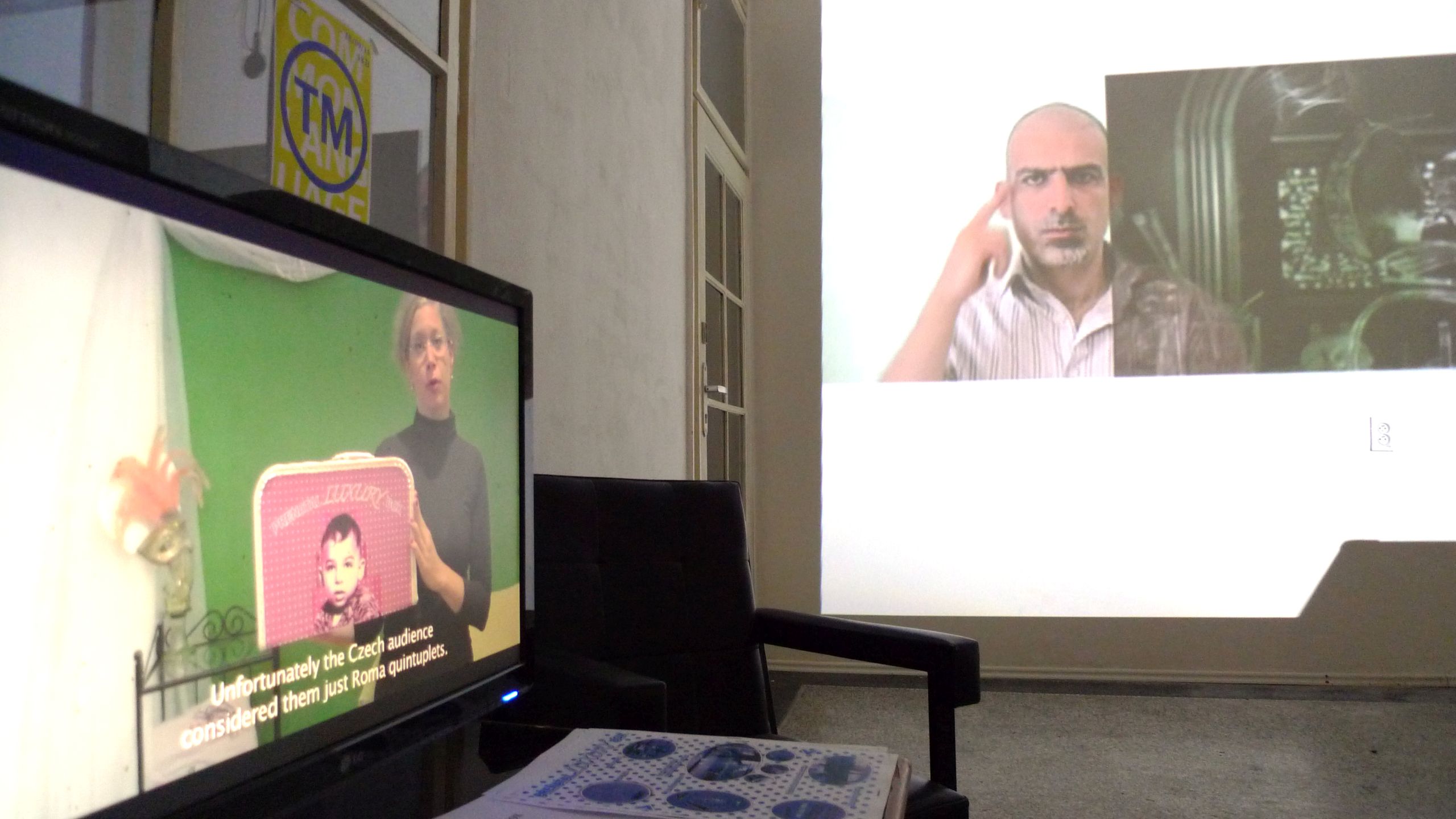
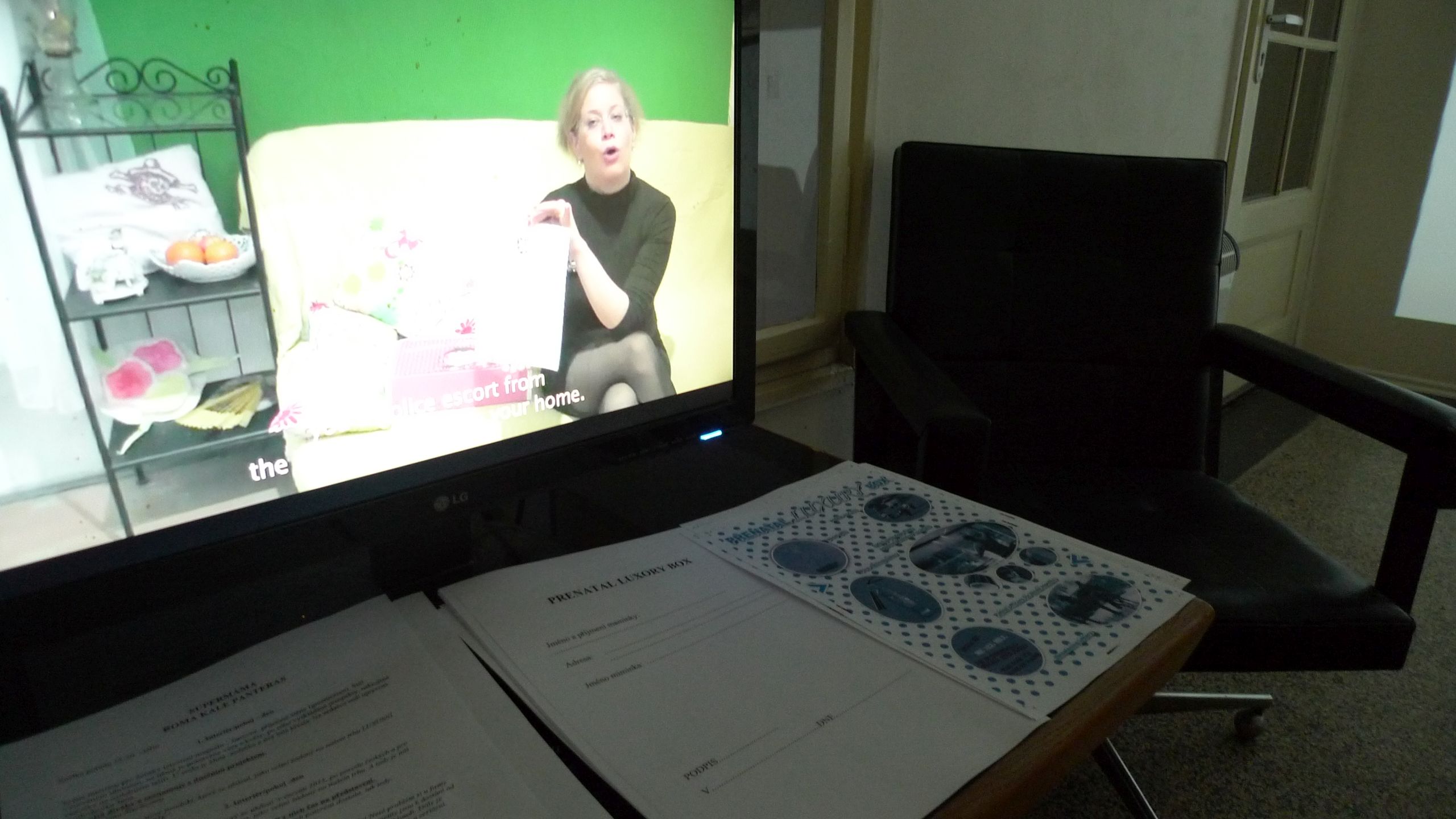
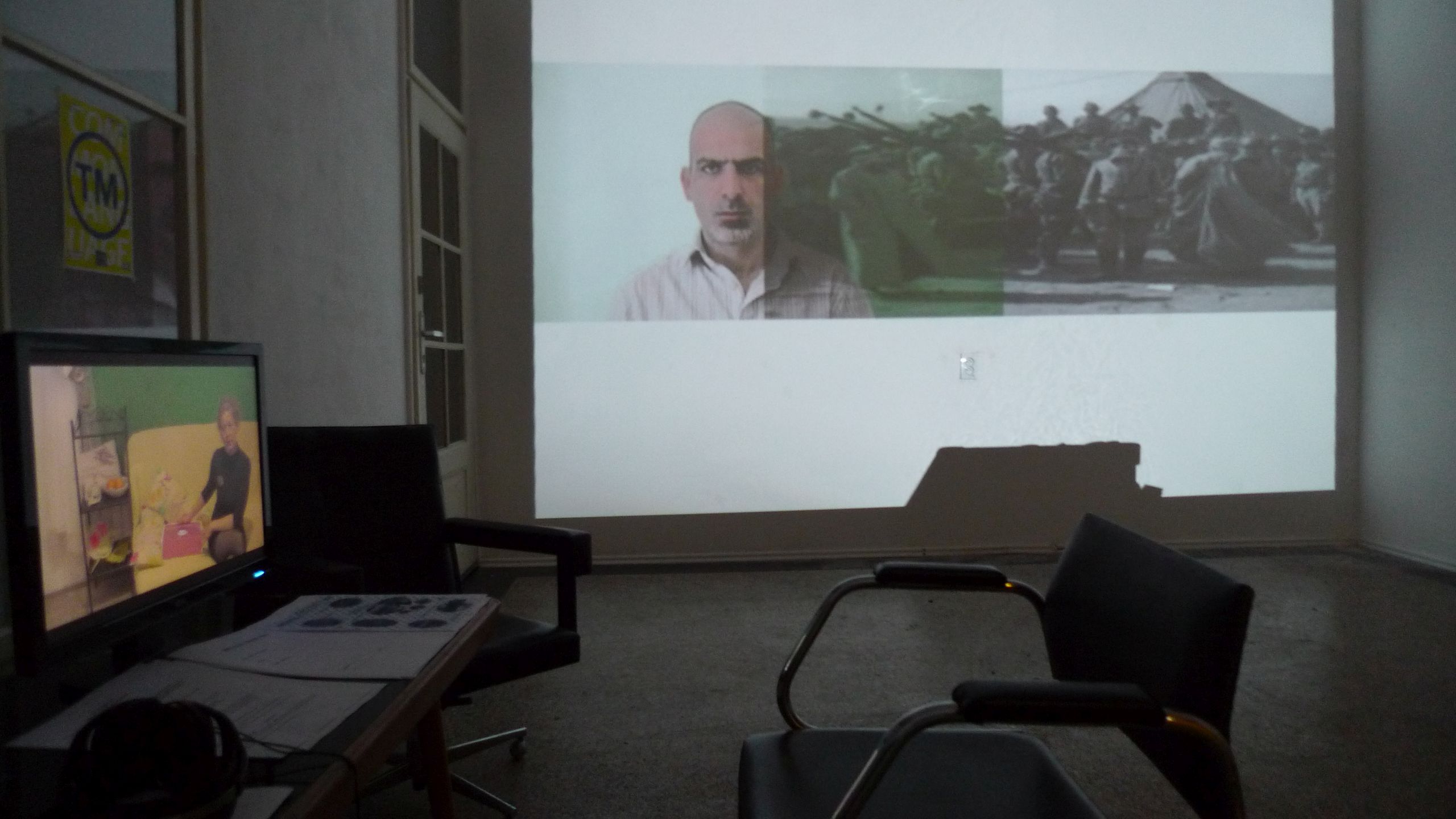

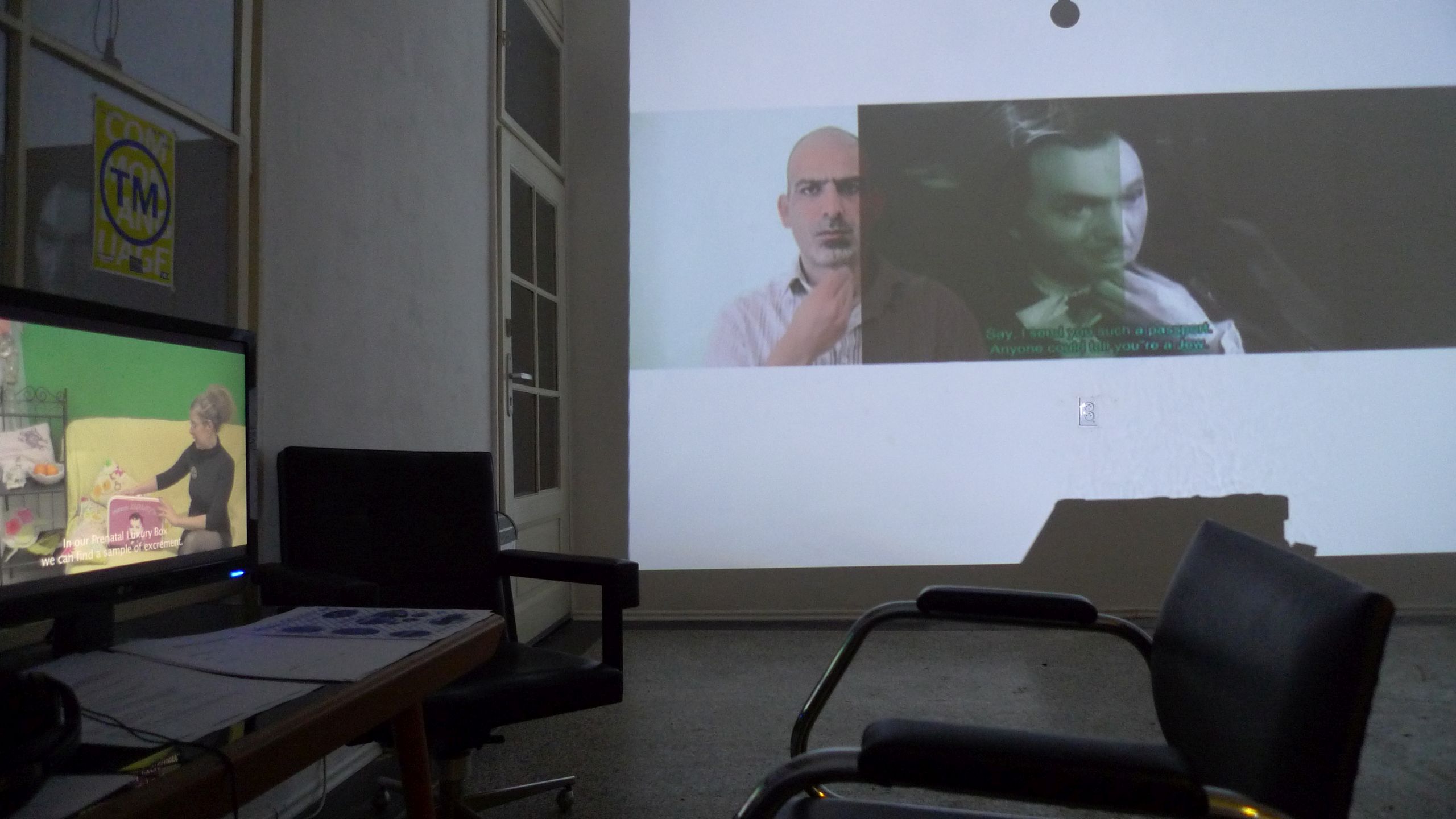


Common Language
Tamara Moyzes / Common language
as part of the event We’re Open!
1. video – Dictionary
Sign Is of The Essence: A Note on Tamara Moyzes’ and Shlomi Yaffe’s “Dictionary”
Just like any other language, also the sign language—or better yet sign languages, as there is no unified international code for signing (a common term to describe the communication among the members of the deaf and mute community)—undergoes a continuous radical change, following major shifts in public discourse and standard vocabulary adopted and promoted by mainstream media and social networks. This process also involves a constant search for new expressions fit to describe such phenomena as nationalities, ethnicities, gender and sexual identities, as well as other highly nuanced and complex characteristics, the traditional definitions of which are for the most part products of complicated and unevenly developed social and cultural constructs.
Underpinned by fundamental religious believes, cultural stereotypes, and politically loaded historical narratives, besides being ruled by rigid societal conventions largely incompatible with today’s level of awareness of human rights and individual freedoms, the old ways of describing someone’s “otherness” have gradually receded, being replaced by signs that are often, albeit not exclusively, more culturally sensitive and basically renouncing the essentialist grasp of individual and collective idiosyncrasies, especially those based on racially stereotyped features and other biased, largely demeaning, collective characteristics that are still deeply entrenched in the notorious repertoire of colonial thinking.
Over the past decade teams of experts carried out numerous studies and analysis of different sign languages (American, British, German, French, Hebrew, Arabic, and others), striving to codify new signs that would be not only politically correct (i.e. universally acceptable as inoffensive) but, given the sometime overstated iconicity of the sign language, simply better integrated into the overall system of modern speech by being deprived of their caricature-like and even grotesque implications. Besides these attempts for more or less institutionalised revisions of sign languages, which might be also seen by some members of the deaf and mute community as an unwelcome intervention into their own cultural identity and rights, there is a whole spontaneous development of each individual sign language comparable to that of any other of spoken languages, including the development of various slangs and jargons used by signers of certain specific age groups, social and cultural backgrounds, etc.
It is mostly the iconicity of the antiquated sign language that has inspired Prague-based Israeli artists Tamara Moyzes and Shlomi Yaffe to create their short, yet highly intriguing video that demonstrates the most blunt stereotypes of representing national, ethnic, and sexual identities and how deeply rooted they are in the overall Western patriarchal cultural code and rhetoric. Using the aesthetic of the split screen, the artists borrow signs from different sign languages (American, French, Hebrew, and Czech), juxtaposing them to excerpts from select movies ranging from the early silent classics (The Heart of an Indian Maid, USA, 1911), across Nazi propaganda (Jud Süß, Germany, 1940), to regular theatrical features (Munich, USA, 2005). While the cinematic sequences feature the notorious Western imagery of Others, the “interpreter” signs individual words as Jew, Arab, Gypsy, Chinese, Native American, Indian, German, gay, and Palestinian in the select sign languages with some signs directly mimicking the gestures of actors on the screen and others referring either to the represented group’s physiognomy or their traditional dress. It is said that a picture can be worth a thousand words, but the inherited fantasies and visions, by no means innocent, that are feeding our thought and language, whether they are rendered in signing, speech or the cinematic image, elucidate the averted face of our cultural memories and shed light into the darkest corners of of our cultural identities. The sign is of the essence, there is no doubt about it.
—Misha Sidenberg
Film excerpts featured in the video:
Jud Süß (Germany, 1940)
Lawrence of Arabia (Canada, 1962)
The Hunchback of Notre Dame (USA, 1956)
The Mask of Fu Manchu (USA, 1932)
The Heart of an Indian Maid (alternative title: Le sacrifice de la jeune Peau-Rouge, USA, 1911)
The Thief of Baghdad (USA, 1940)
Shoulder Arms (USA, 1918)
The Boys in the Band (USA, 1970)
Munich (USA, 2005)
2. video
SuperMom / SuperMáma
video 6.24min, posters, objects, 2014 video 6.24 min, plakáty, objekty
The medial story of “The Czech Quintuplets” in the Czech society shows the lack of basic human respect and absence of moral values in the Czech Society such as respect and protection of family and children. It brings violence and causes limits of freedom to a family confronted with such a hostility.
Parents of the first ever Czech quintuplets were accused on the basis of the color of their skin and ethnicity by a xenophobic part of the Czech audience for getting too much support from the Czech State. One of the accusation also pointed out that in the past a Czech family having quadruplets didn’t get as much state support as the family of Alexandra Kiňová (mother of quintuplets)
We chose for our Prenatal Luxury Box six things that none of the Czech moms did get in the past. The content of the box is based on the real facts. The whole Prenatal Luxury Box a mom of the Czech quintuplets Alexandra Kiňová got in reality.
In collaboration with:
Tamara Moyzes & Shlomo Yaffe & Vera Duzdova & ROMA KALE PANTHERA
